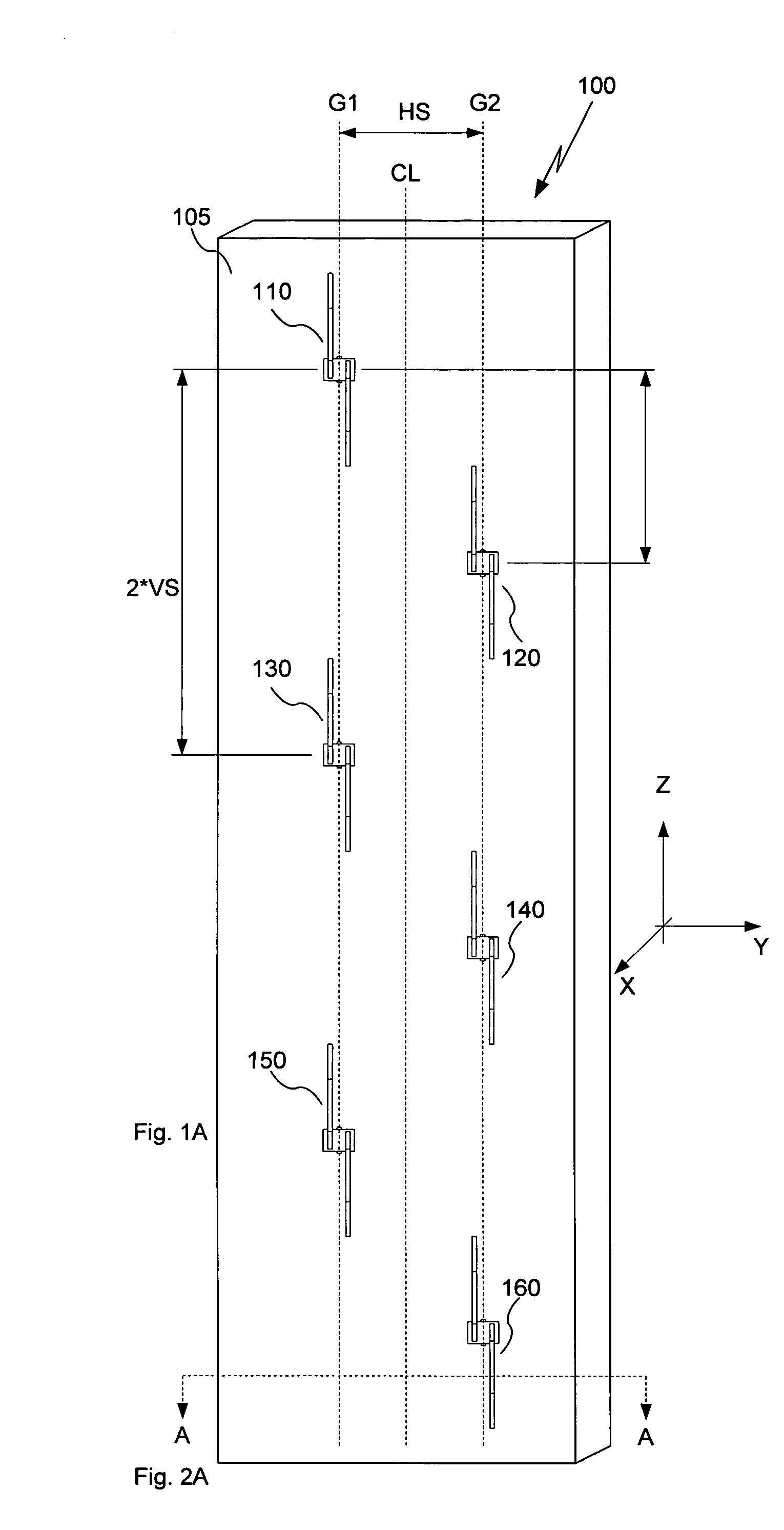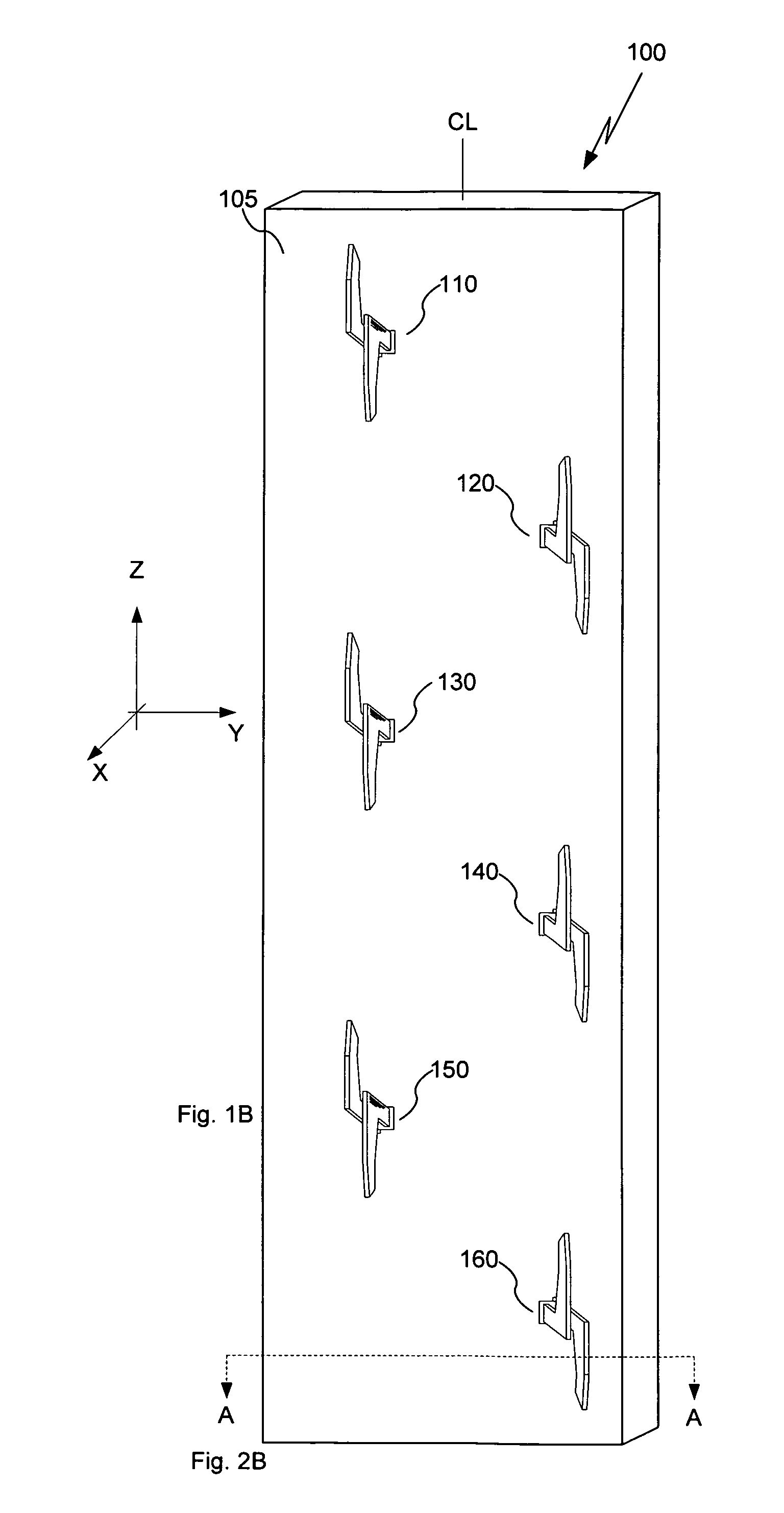Dual staggered vertically polarized variable azimuth beamwidth antenna for wireless network
a vertical polarization variable azimuth and antenna technology, applied in antennas, antenna details, electrical equipment, etc., can solve the problems of increasing the weight and wind load of the newly installed antenna array, requiring substantial amounts of relatively expensive dielectric materials and rigid mechanical support, and increasing the size and weight of the new antenna array
- Summary
- Abstract
- Description
- Claims
- Application Information
AI Technical Summary
Benefits of technology
Problems solved by technology
Method used
Image
Examples
Embodiment Construction
[0028]Reference will be made to the accompanying drawings, which assist in illustrating the various pertinent features of the present invention. The present invention will now be described primarily in solving aforementioned problems relating to use of a plurality of mechanical phase shifters, it should be expressly understood that the present invention may be applicable in other applications wherein beamwidth control is required or desired. In this regard, the following description of a dual stagger, vertically polarized antenna array equipped with pivotable radiating elements is presented for purposes of illustration and description. Furthermore, the description is not intended to limit the invention to the form disclosed herein. Accordingly, variants and modifications consistent with the following teachings, and skill and knowledge of the relevant art, are within the scope of the present invention. The embodiments described herein are further intended to explain modes known for p...
PUM
 Login to View More
Login to View More Abstract
Description
Claims
Application Information
 Login to View More
Login to View More - R&D
- Intellectual Property
- Life Sciences
- Materials
- Tech Scout
- Unparalleled Data Quality
- Higher Quality Content
- 60% Fewer Hallucinations
Browse by: Latest US Patents, China's latest patents, Technical Efficacy Thesaurus, Application Domain, Technology Topic, Popular Technical Reports.
© 2025 PatSnap. All rights reserved.Legal|Privacy policy|Modern Slavery Act Transparency Statement|Sitemap|About US| Contact US: help@patsnap.com



